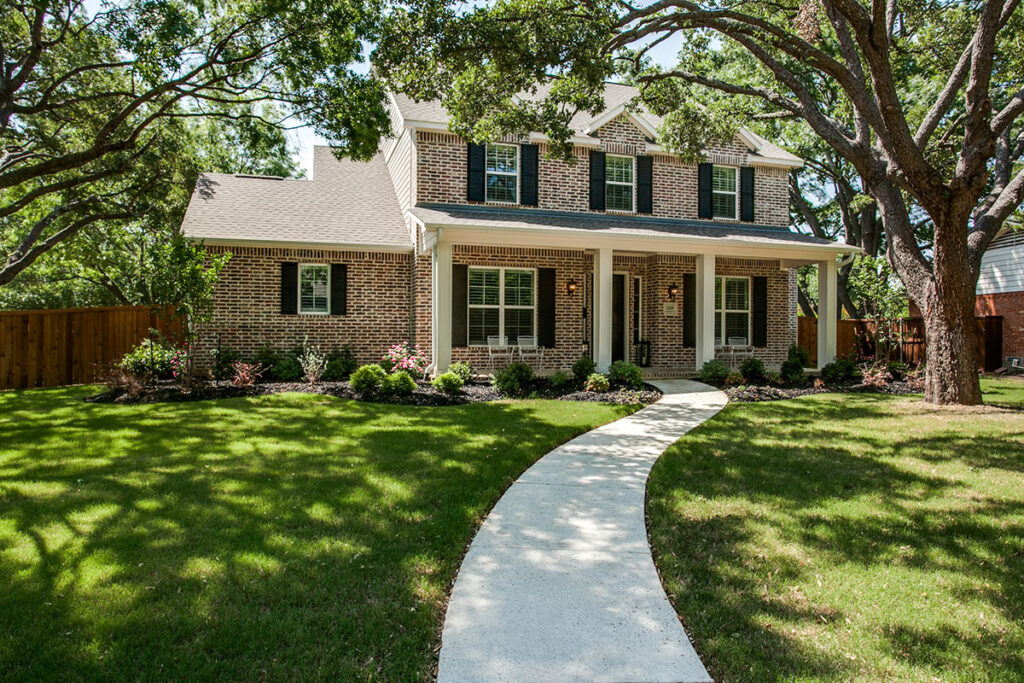The school bell is about to ring! Are you ready for your child’s first day of school photo? Pinterest offers hundreds of creative ideas which can be exciting and fun. But honestly it adds a lot of unneeded stress of making sure your photo is unique and perfect. This year eliminate the stress and keep it simple. Start a new tradition this year of taking your child’s photo in front of your home’s best asset “The Front Door.”
The front door is the first thing that people notice about a home. Like your landscape, a beautiful door, be it wood or glass, expresses the personality of the homeowner. It draws you into the home with a warm welcoming hug. Check out the article below on Houzz about How to Choose a Front Door for you home.
Houzz Article by Vanessa Brunner
The front door is a huge part of your home’s first impression. It’s a transitional part of the facade that makes a statement about who you are, and what people can expect when they walk into your home. Not to mention, it has an impact on the value of your home. I’m not just talking about curb appeal; replacing your front door with an energy-efficient model can add to the overall value of your home, save as much as 10 percent on energy bills, and qualify you for certain tax credits in the United States, as long as it’s installed by December 31, 2011.
But how do you determine which door is right for you? A front door — like any exterior material — has to be tough enough to withstand the elements. But it also should complement and add to the aesthetic of your home.
Since functionality is its primary (and most important) purpose, the best way to narrow down front door choices is to look at it in terms of material. The three most common exterior door materials today are wood, fiberglass composite, and steel.
Wood Doors: Wood is one of the more common choices for a front door. Despite the faux substitutes, nothing can beat the real deal for many homeowners. Modern wood door models are often sandwiches of wood veneer skins over a wood core. This construction tends to minimize the chance of warping, and also lowers cost. For this type of wood door, look for furniture-grade veneers that are at least 1/16 inch thick. Anything thinner may be too easily damaged.
While wood doors are luxurious and beautiful, they also offer a fair amount of upkeep. Wood is sensitive to moisture, and wetness in the wood can cause the door to warp, crack and change shape. Sun is also an important factor in the life of your wood door. If your door is protected from these elements, it’s bound to last much longer.
When shopping for pre-finished wood doors, look for durable stains and high-gloss finishes since these will best protect wood. If you’ve decided to apply the finish or stain on your own, make sure to put the finish on the top and bottom edges of the door as well to help prevent it from absorbing moisture.
Because of its sensitivity to the elements, a solid wood door should be examined each year to see if it needs any refinishing. Signs of wear on a finish include dullness, or a dry touch to the finish; a white shade appears on the finish, and dark streaks at the bottom of the door (which can indicate moisture being drawn up into the wood).
If you notice any of these indications on your wood door, lightly sand, clean, and re-prime these spots.
Wood doors also tend to be the most expensive on the exterior door scale. A full system — which includes a pre-hung door, hinges, locksets, weather stripping, etc. — can become fairly costly. Make sure you use hinges and other hardware from the same manufacturer — or actually come with the door, as with this pre-finished solid mahogany door. There are some systems that won’t match up well with other distributors’ parts.
Fiberglass Composite Doors: Relatively affordable, fiberglass composite doors are most often chosen for their durability, and the fact they’re almost maintenance free. These doors can last a very long time, and many models offer warranties for as long as the buyer lives in the house.
Because fiberglass composite doors can go several years without needing any paint or stain touchups, they tend to work very well in harsh and humid climates. This material lasts longer than wood or steel, and its foam core offers much more insulation than wood.
Since this material resists denting, warping, rot, rust, and other issues associated with wood and metal, fiberglass composite is a natural choice for a front door exposed to extreme weather. It’s great for high traffic areas, and — like this traditional fiberglass door with a light oak grain — its appearance can be easily customized to look like wood or other natural materials.
Steel Doors: Steel doors can suffer dents, but minor damage can usually be repaired with a simple auto-body repair kit. An all-paneled steel door, such as the one above, has great insulating value, can help cut energy costs, and is one of the least expensive front door options.
However, steel tends to have a shorter lifespan than wood or fiberglass, and because it can rust, it isn’t always the best choice for a home subject to harsh weather conditions. Also, steel conducts temperature, which is not ideal in an extremely hot or cold environment.
Just like wood or fiberglass composites, steel doors come in a variety of shapes and sizes — like this steel door unit with a decorative glass window. Steel is most often chosen for its strength, and the fact that it won’t crack or warp like wood.
Most steel doors — including this über-secure and high-end stainless steel model from Milano — can be particularly vulnerable to rust in certain weather conditions if they aren’t finished correctly. Some models will have a coating with a baked-on polyester finish that requires periodic repainting. Steel doors that are a little more expensive might have a vinyl coating for weather resistance, or even a laminated wood veneer.
Doors with Color: Now for the fun part! Once you know what material you need, you get to think about color, style and overall appearance. It’s the first thing guests will see when visiting your home. Stay within the general style tone of your house, but don’t be afraid to go bold, either. Think about the kind of statement you’re trying to make about your home, and make sure the color or style of the door you choose makes that statement clear.
Orange gives this structural home a significant pop while still fitting with its modern design.
It’s amazing the difference the front door can make in the appearance of a home’s facade. A splash of red-orange on the exterior door adds a vibrant touch to a traditional exterior.
Click here to read full article. Don’t forget to follow Shaddock Custom on Houzz.
If you would like to learn more about building a custom home contact Ben at 214.497.5858 or ben@shaddockcaldwell.com.






